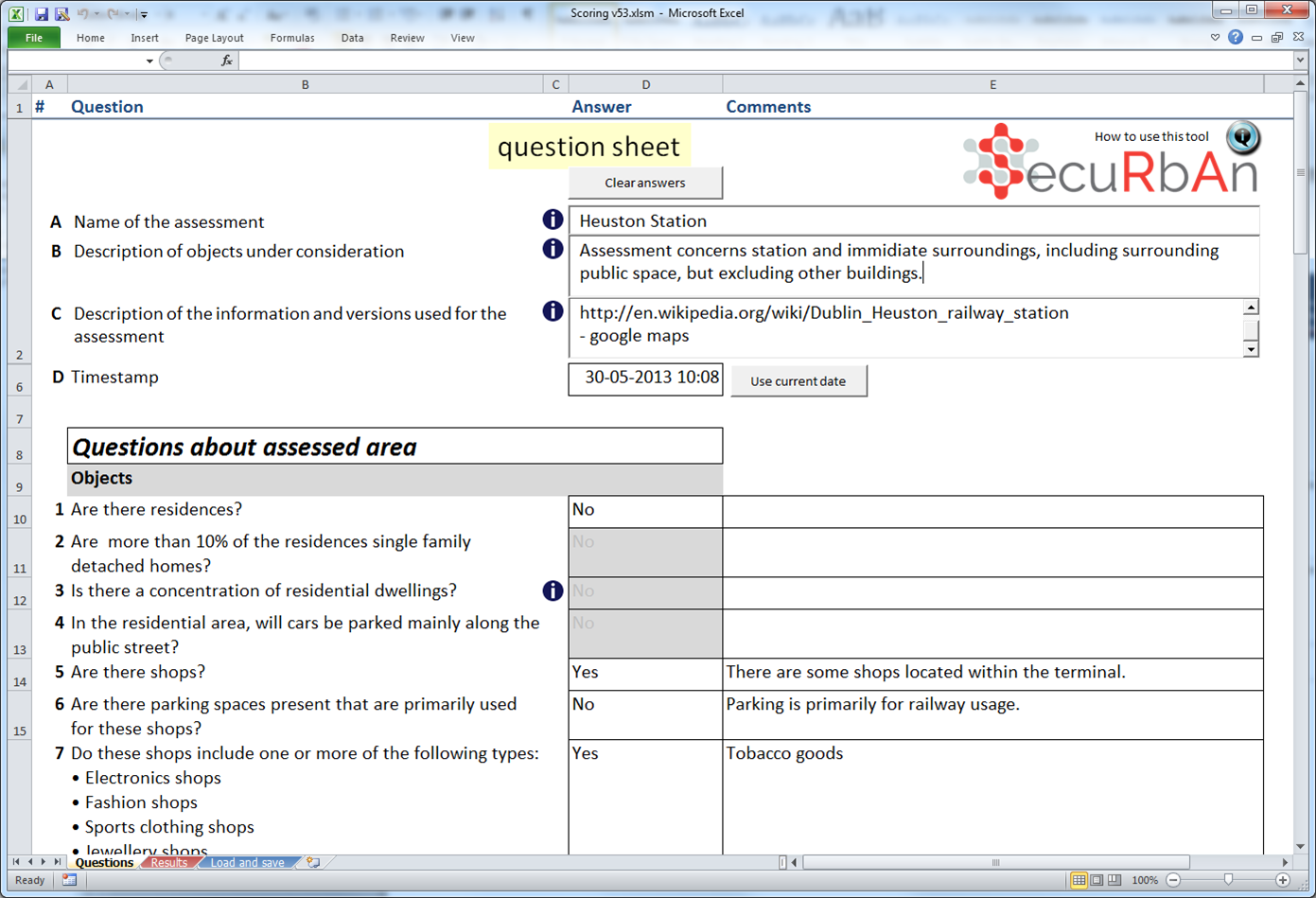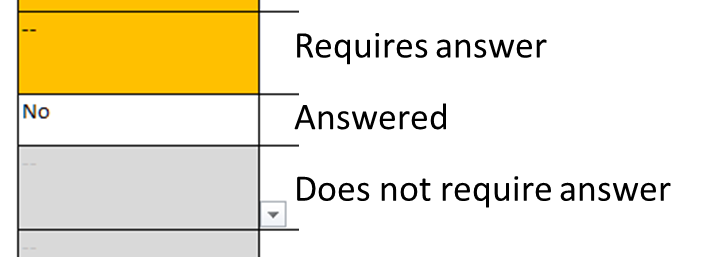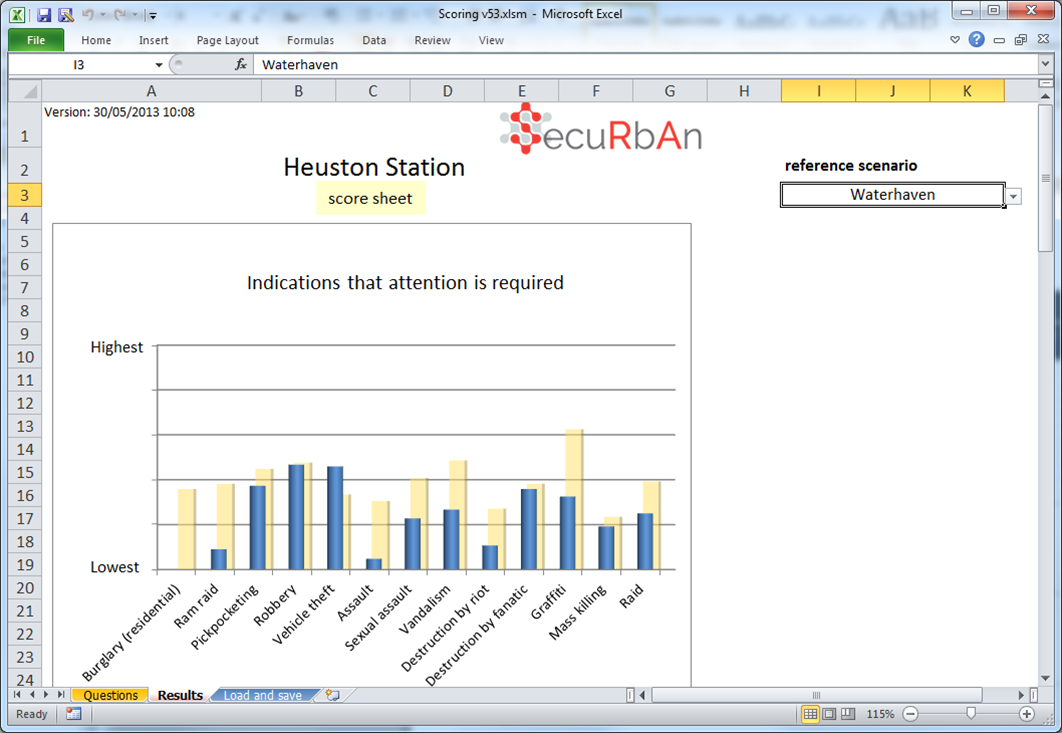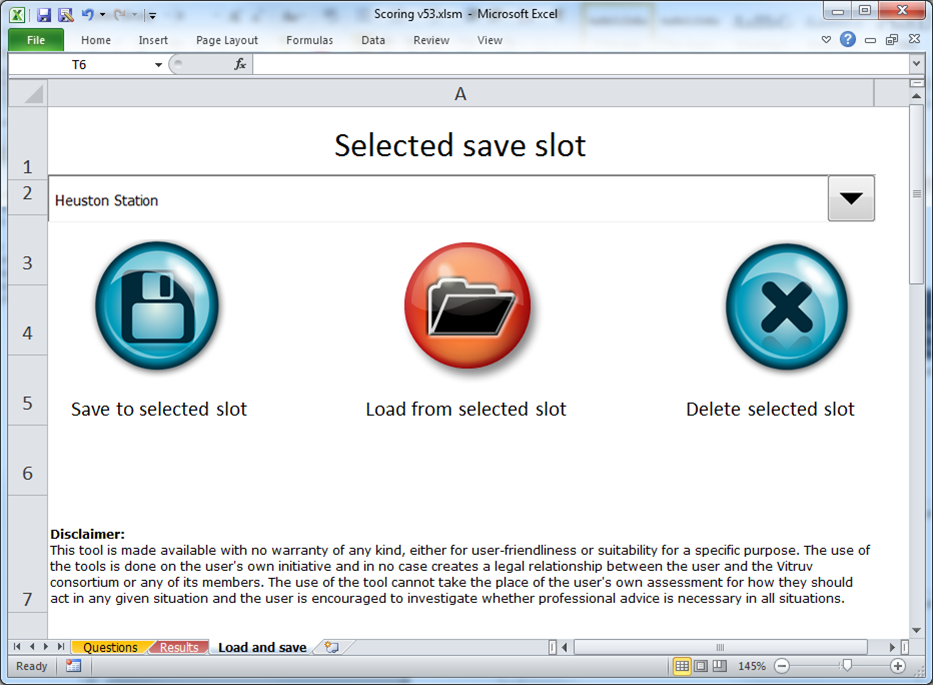Difference between revisions of "How to Use the Concept Tool"
| Line 47: | Line 47: | ||
: this diagram can be used to know which security issues need the most attention. |
: this diagram can be used to know which security issues need the most attention. |
||
* A (optional) diagram indicating the difference between this assessment and previously saved assessments; |
* A (optional) diagram indicating the difference between this assessment and previously saved assessments; |
||
| − | : this diagram can be used to quickly see the improvements or detriments between the current situation and a previously saved |
+ | : this diagram can be used to quickly see the improvements or detriments between the current situation and a previously saved assessment. (see [[How to Use the Concept Tool#Saving and Loading assessments|Saving and Loading assessments]]) |
* A list indicating the answers that contributed to the resulting assessment for each security issue. |
* A list indicating the answers that contributed to the resulting assessment for each security issue. |
||
: this list can be used to quickly identify the elements that contribute to or mitigate a security issue. This list includes direct links to the Securipedia pages relating directly to the security issue. |
: this list can be used to quickly identify the elements that contribute to or mitigate a security issue. This list includes direct links to the Securipedia pages relating directly to the security issue. |
||
Revision as of 22:27, 29 April 2013
Contents
Starting SecuRbAn
Start the ExcelTM file 'Securban.xlsm'. For macros and buttons to work, click 'allow' in the top bar when it asks whether to allow macros. If you don't have the file, it can be downloaded for free from http://www.vitruv-project.eu/downloads.html.
Doing an assessment
The questions can be found on the first tab called 'questions', found at the bottom of the SecuRbAn screen.
Initial Set-Up Phase
The first step will involve the urban planner setting up a file for his/her new project.
1. Start the Securban tool;
2. Enter your name/ID of the specific analysis (something easily to identified with this assessment);
3. Enter a short description of the project:
Be clear on what is, and is not, included in the assessment:
- Data sources, data revisions/versions;
- A description of (grouping of) objects;
4. Enter de date (+ time if desired) of the assessment.
SecuRbAn (and supporting Securipedia) Risk Assessment Phase
4. SecuRbAn will now take you through a series of questions to determine:
- a The presence of attractive objects to certain crime types;
- b Contributing circumstances;
- c Protection measures.
5. Each question features a selection box with possible answers and a free text box for comments. The possible answers for each question can be selected by clicking the cell, selecting the down arrow to the right of the cell and clicking the desired answer in the list that unfolds. Answers can also be selected by (exactly) typing them in.
The comment box can be used to document any observations and thoughts you have while answering the question. If used correctly, it will serve as a useful trail of your security considerations through the versions of your urban development.
6. The questions required for a complete assessment will depend on the answers you give. To know which questions to answer, the cells for the answers are colour coded as follows:
Output Phase
The output of the assessment can be found on the second tab, called 'questions', found at the bottom of the SecuRbAn screen.
7. From the previous phase, the tool will output an overview of the assessment results. These are depicted in three ways:
- A diagram indicating the assessed need for attention to each security issue;
- this diagram can be used to know which security issues need the most attention.
- A (optional) diagram indicating the difference between this assessment and previously saved assessments;
- this diagram can be used to quickly see the improvements or detriments between the current situation and a previously saved assessment. (see Saving and Loading assessments)
- A list indicating the answers that contributed to the resulting assessment for each security issue.
- this list can be used to quickly identify the elements that contribute to or mitigate a security issue. This list includes direct links to the Securipedia pages relating directly to the security issue.
Saving and loading assessments
The option for saving and loading assessments can be found on the third tab, called 'load and save', found at the bottom of the SecuRbAn screen.
Assessments made can be saved ,loaded or detelted in the Securban tool by using one of three buttons on the Load and save tab of the Securban tool:
- First select a slot to load from or save to
- Click the appropriate button.
Finding solutions for security issues
The SecuRbAn tool will link you to the appropriate pages in Securipedia. On this page you can find more information about the security issue, explanations about contributing circumstances, the problems you might expect when not dealt with and possible measures that can relieve the problem.
All these information is cross-linked with other information in Securipedia and outside it, allowing to easily deepen your knowledge as required in the subjects you need to find the best solutions to reduce the security issue.




